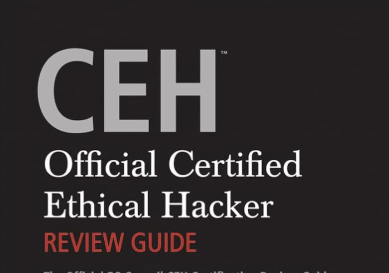Top 5 AWS Cloud Security Risks You Need to Know and safe
Learn about the top 5 AWS cloud security risks and how to safeguard your data. Stay informed and protect your cloud environment effectively.
What is AWS cloud Security?
AWS (Amazon Web Services) Cloud Security refers to the suite of tools, services, and best practices designed to protect data, applications, and infrastructure within the AWS cloud environment. AWS provides a highly secure and scalable infrastructure, but customers are responsible for securing their data and applications within the cloud. AWS Cloud Security is a shared responsibility model, meaning both AWS and the customer have roles in ensuring security.
If you are interested to learn about database security and its feature please learn my previous post which is in a simple way of understanding.

1. Misconfigured Security Settings
The Risk:
One of the most common mistakes AWS users make is not properly configuring security settings. AWS offers a wide range of features like Identity and Access Management (IAM), security groups, and key pairs. However, it’s easy to misconfigure these settings, especially if you’re new to the platform.
For example, leaving your S3 buckets open to the public or allowing overly permissive IAM policies can expose your data and give unauthorized users access to your resources.
How to Stay Safe:
- Use Least Privilege Access: Always follow the principle of least privilege when setting permissions. Only give users the minimum permissions they need to perform their tasks.
- Review IAM Policies Regularly: Regularly audit IAM roles and policies to ensure that users and services have the appropriate level of access.
- Enable MFA (Multi-Factor Authentication): Ensure that MFA is enabled for your AWS root account and for any high-privilege users.
2. Unsecured APIs and Endpoints
The Risk:
AWS provides a number of APIs for interacting with its services, but if these APIs are not properly secured, they can be a gateway for attackers. If your APIs are not properly authenticated or encrypted, hackers can exploit vulnerabilities and gain unauthorized access to your systems.
This risk also extends to unsecured endpoints. If you expose an application to the internet without proper access controls, it can quickly become a target for cyberattacks.
How to Stay Safe:
- Use API Gateway: AWS offers API Gateway to manage and secure your APIs. Use it to monitor, throttle, and authenticate requests to your APIs.
- Secure Endpoints with Encryption: Ensure all communication to and from your services is encrypted using TLS (Transport Layer Security). Encrypt sensitive data at rest and in transit.
- Apply Rate Limiting: Protect your APIs from abuse by setting rate limits to prevent attacks like brute force or denial of service.
3. Data Breaches Due to Insufficient Encryption
The Risk:
Data breaches can happen when sensitive information is stored or transmitted without adequate encryption. If sensitive data like customer details or intellectual property is stored in an unencrypted format, it becomes an easy target for cybercriminals.
While AWS does offer encryption tools for data at rest (e.g., with S3, RDS, and EBS), it’s crucial to ensure that these features are properly enabled and configured.
How to Stay Safe:
- Encrypt Data at Rest and in Transit: Use AWS’s built-in encryption services, like Amazon S3 encryption and EBS encryption. Additionally, ensure that all communications between users and applications are encrypted using HTTPS.
- Use KMS (Key Management Service): AWS KMS allows you to create and manage keys used for encrypting your data. Implement proper key management practices, such as rotating keys regularly.
- Audit Your Encryption Practices: Regularly review your encryption settings to ensure that they meet the latest security standards and compliance requirements.
4. Lack of Monitoring and Logging
The Risk:
In a cloud environment, continuous monitoring and logging are essential for identifying and responding to security incidents. Without adequate monitoring, you may miss signs of unusual activity or breaches, which can lead to costly consequences.
While AWS cloud Security provides tools like CloudTrail and CloudWatch to help with monitoring and logging, failing to set them up correctly or ignoring alerts can leave your environment vulnerable.
How to Stay Safe:
- Enable CloudTrail: CloudTrail records all API calls in your AWS account, giving you insight into what’s happening in your environment. Make sure it’s enabled and that logs are regularly reviewed.
- Use CloudWatch for Real-Time Monitoring: Set up CloudWatch to monitor application performance and security metrics. Set alarms for suspicious activity, such as unauthorized access attempts.
- Centralize Logs for Analysis: Use AWS services like Amazon Elasticsearch and Kibana to aggregate logs for easier analysis and detection of security threats.
5. Insecure Third-Party Integrations
The Risk:
AWS allows you to integrate with third-party applications and services, which can expand the functionality of your environment. However, insecure or improperly configured third-party tools can introduce vulnerabilities into your AWS ecosystem.
Many third-party integrations may not follow the same stringent security practices as AWS, and an insecure integration could expose sensitive data or give attackers a new point of entry into your network.
How to Stay Safe:
- Vet Third-Party Tools: Before integrating third-party services with AWS cloud Security, ensure they have strong security practices, such as secure data handling, encryption, and regular vulnerability testing.
- Limit Permissions for Third-Party Services: Don’t grant unnecessary permissions to third-party services. Limit their access to only the resources they need to function.
- Monitor Third-Party Activity: Use tools like AWS Config and AWS GuardDuty to monitor how third-party applications interact with your environment.







AuFx ejVvMr orVdegMx orY EaYLQ EJGCRI